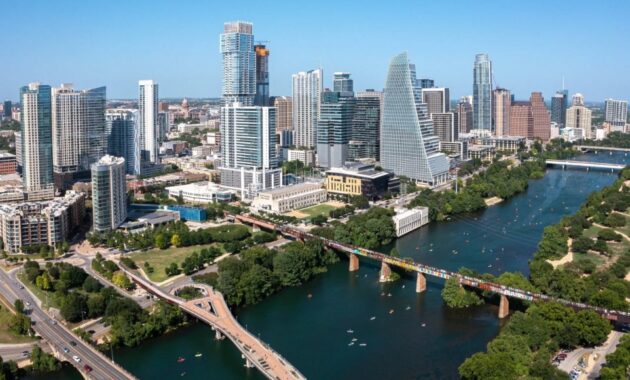If you’re a young professional dreaming of building long-term wealth but feel uncertain about where to invest in real estate, you’re not alone. Many struggle to strike the right balance between affordability and growth potential. In this article, we’ll explore the best cities to invest in real estate, backed by data and fresh insights to help you make confident choices.

Why Picking the Right City Matters
Choosing the ideal city for real estate investment can make a substantial difference in your financial trajectory. Affordable entry prices, economic stability, long-term demand, and capital appreciation all contribute to healthy returns. Additionally, demographic trends and lifestyle appeal influence both rental and resale value.
Understanding these factors ensures your investment aligns with both financial goals and emotional peace of mind. You’re not just betting on a location—you’re building a stable foundation.
Top Cities in the U.S.: Stability and Growth
Recent data highlights a few standout U.S. cities offering a compelling blend of affordability and growth:
-
McKinney, Texas leads national rankings due to its surge in housing developments (38% built since 2010) and robust job growth—21% annually.
-
Other Texas cities such as Richardson, Frisco, Denton, and Allen also rank in the top 10 for their strong markets and steady demand.
-
Dayton, Ohio has emerged as a top market thanks to low listing prices, growing home values, and vacancy rates under 5%, making it attractive for both investors and renters.
These markets offer the advantage of lower competition, sustainable value increases, and high demand—a powerful combination for smart investors.
U.S. Markets with Unique Appeal in 2025
Beyond Texas and Ohio, several U.S. markets are gaining investor interest for unique reasons:
-
Indianapolis, Indiana stands out for its affordability and growing resilience to economic shifts.
-
Charlotte, North Carolina benefits from population growth and a booming banking and tech sector.
-
Luxury and lifestyle markets like Naples, Florida, Park City, Utah, and Aspen, Colorado attract high-end buyers and generate strong rental income.
Global Real Estate Hotspots
Real estate opportunities extend well beyond the U.S.:
-
London & the Cotswolds (UK): Favored by international investors for prestige, stability, and prestige-status returns.
-
Costa Rica: Eco-conscious developments and political stability draw expatriates, especially in Papagayo and Nosara.
-
Porto (Portugal): Tourism-driven rental yields remain strong.
-
Paris (France) benefits from global demand and low interest rates, even amid regulation.
-
Madrid (Spain): Offers high yields but requires careful navigation of stricter regulations.
-
Ras Al Khaimah (UAE): Presents affordable luxury and enticing incentives like the 10-year Golden Visa.
Balanced View: Pros & Cons by Region
U.S. Midwestern Cities (e.g., Dayton, Indianapolis)
-
Advantages: Low entry cost, strong rental demand, reliable appreciation.
-
Drawbacks: Slower drama-free growth; lower immediate excitement.
U.S. Sunbelt & Luxury Markets (e.g., Charlotte, Naples)
-
Advantages: Growing economies, diverse populations, high desirability.
-
Drawbacks: Higher competition and upfront cost.
Global Destinations (e.g., London, Porto, RAK)
-
Advantages: Lifestyle appeal, rental tourism, favorable tax or visa structures.
- Drawbacks: Regulatory complexity, currency risk, management distance.
FAQ
1. Is it better to invest in U.S. cities or global markets?
It depends on your goals. U.S. markets like Dayton and McKinney offer affordability and steady growth. Global markets may provide lifestyle advantages and potentially higher yields but involve regulatory and management complexity.
2. How much capital is needed to start in these cities?
Midwest U.S. properties can require entry around US $100–200k. Global markets vary: e.g., Porto condos might start at US $250k+, while luxury markets exceed US $1M.
3. Are luxury accessories worth the investment in rental properties?
Yes—strategic accents (lighting, furniture, décor) can enhance rental appeal and justify premium pricing. Choose durable, stylish pieces to maximize return.
4. How do I analyze a city’s investment potential?
Look at home price trends, job growth, new housing permits, rental vacancy rates, economic resilience, and future development plans.
5. Can I invest remotely in international markets?
Yes—with trusted local agents or management firms. Be mindful of currency risks, legal differences, and property maintenance logistics.
Final Thoughts
Whether you’re drawn to fast-growing American cities or sleek global destinations, now is the moment to act. Start small with markets like Dayton or McKinney, or explore the charm of Porto or Ras Al Khaimah. Enhance investment appeal with thoughtful upgrades, and leverage long-tail keywords to drive traffic and ROI.
